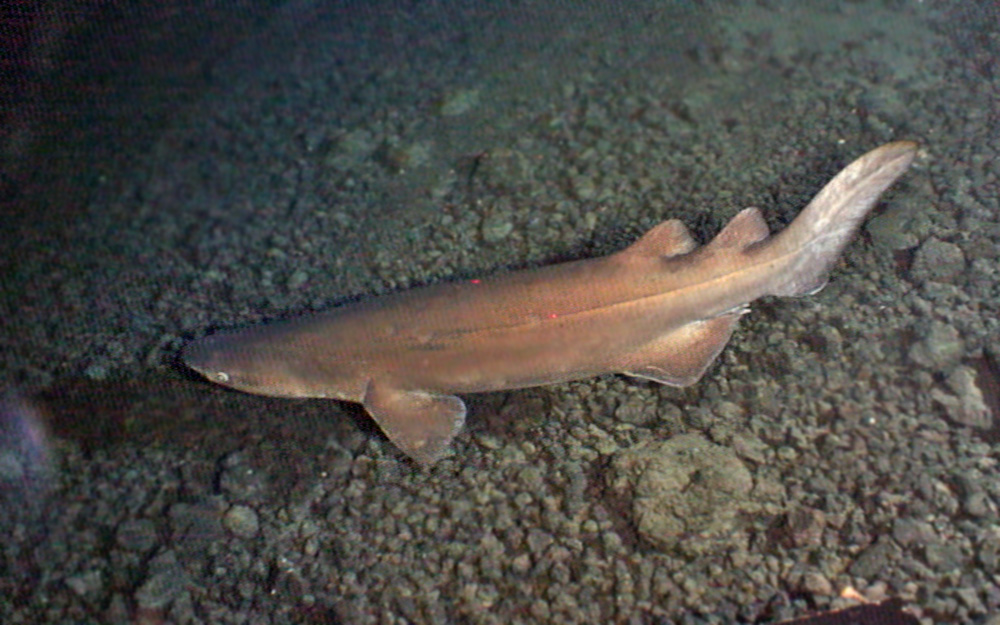Prickly shark
(Echinorhinus cookei)

Classification
General data
The prickly shark (Echinorhinus cookei) is one of the two species of sharks in the family Echinorhinidae (the other one is the bramble shark), found in the Pacific Ocean over continental and insular shelves and slopes, and in submarine canyons.
Bottom-dwelling in nature, it generally inhabits cool waters 100–650 m (330–2,130 ft) deep, but it also frequently enters shallower water in areas such as Monterey Bay off California. This stocky, dark-colored shark grows up to 4.0 m (13.1 ft) long, with two small dorsal fins positioned far back on its body and no anal fin. It is characterized by a dense covering of thorn-like dermal denticles, hence its common name.
Nocturnally active, the prickly shark rests during the day in deeper offshore waters and performs a diel migration to shallower inshore waters at dusk. Individual sharks have a small home range and tend to remain within a given local area. This species consumes a variety of bony and cartilaginous fishes, and cephalopods. Since it moves slowly, it may use suction to capture prey. It is aplacental viviparous, with females producing sizable litters.
The prickly shark is not known to be dangerous to humans and has minimal economic value. It is caught incidentally by commercial deepwater fisheries, which are expanding and may potentially threaten its population. Thus, the International Union for Conservation of Nature (IUCN) has assessed this species as Data Deficient.











